War Remembrance II 1960–61
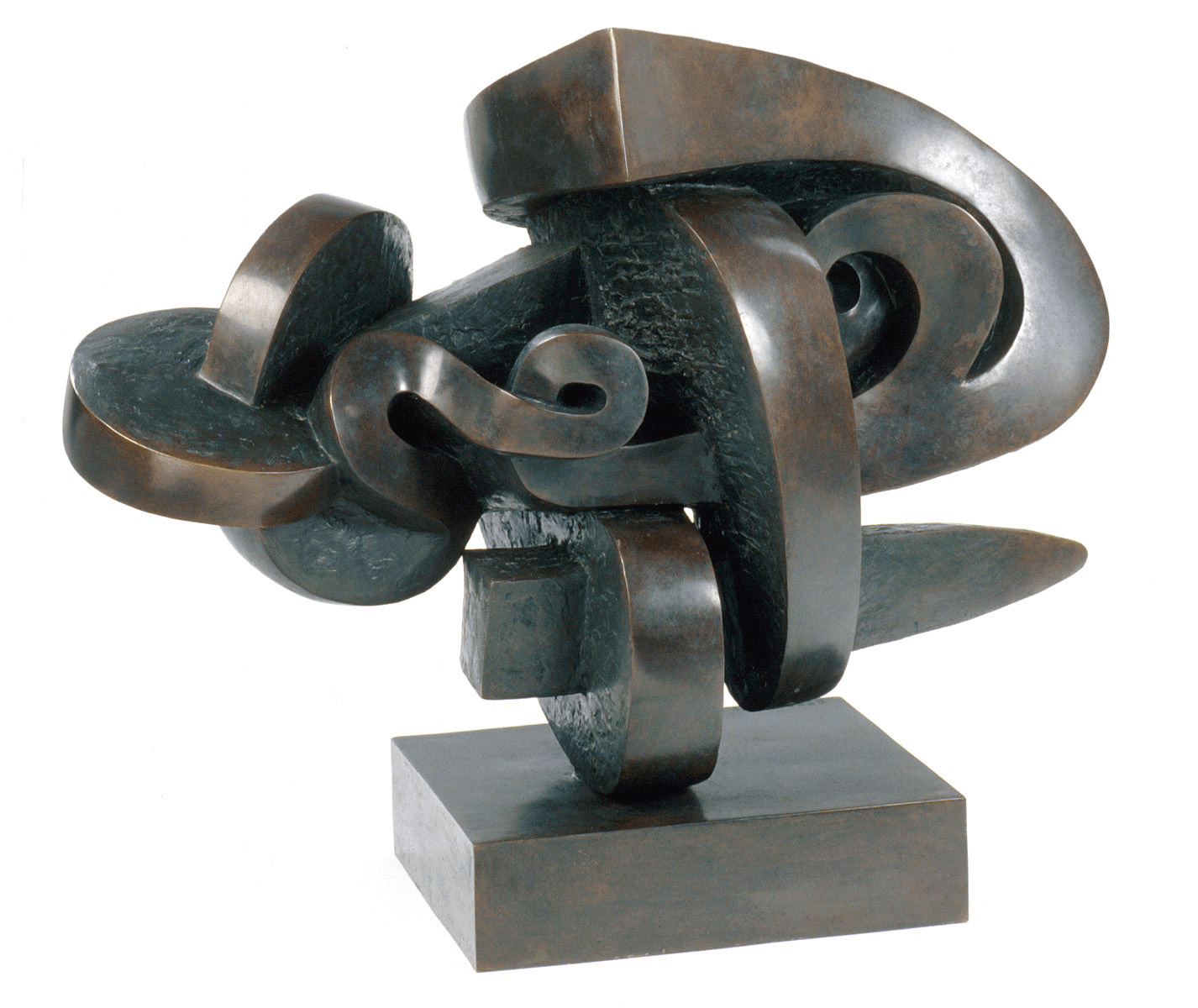
Sorel Etrog, War Remembrance II, 1960–61
Bronze, edition of 5, 88.9 x 49.5 x 102.9 cm
Montreal Museum of Fine Arts
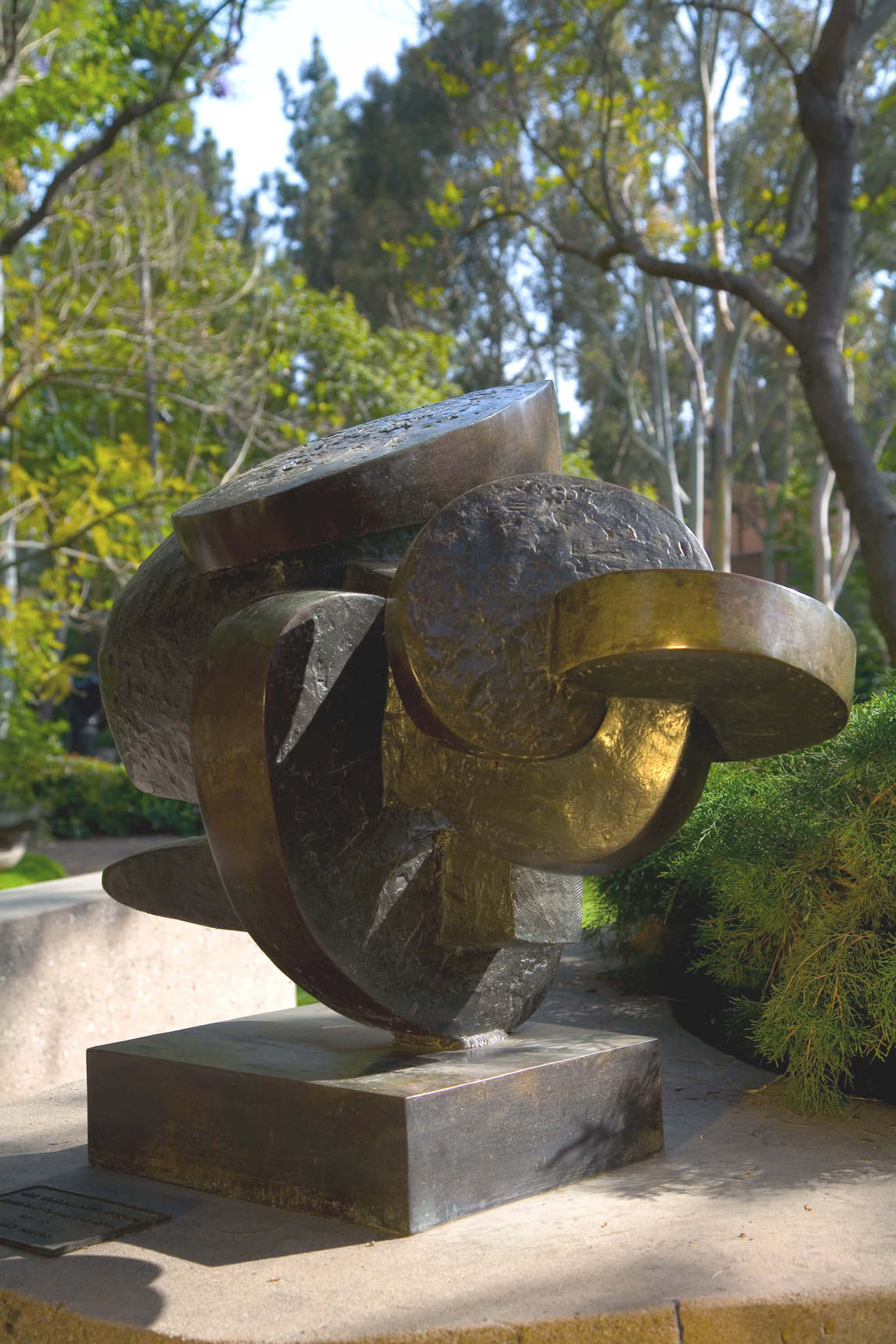
In War Remembrance Study, c.1959, and its counterpart War Remembrance II, Etrog addressed the theme of war and memory, which loomed large in his experience as both a war survivor and a refugee from his homeland. The two War Remembrances are similar in composition, orientation, and form; they are primarily horizontal works made up of circular motifs and rounded spirals that meander, revolve, and evolve into and through one another. Both sculptures are built around two vertically oriented, textured circles that face each other at the centre of the work. The smaller one is at the bottom of the composition, resting on the base; the second, larger one is suspended slightly above. The two circles are linked by a triangular shape that resembles a knife, piercing both circles.
These “wheels of the sun” would also appear in later sculptures such as Sunbird II, 1962–64, and Sun Life, 1984. The motif has a layered symbolic meaning; to the AGO director William Withrow (1926–2018) it stood for both the sun and the wheel; the first is “eternal, omnipresent and absolutely stable,” while the latter “suggests mobility and instability.” Etrog used the shapes to explore “the relationship between mass or weight and the base”: by having one wheel contact the base and the other “float” he created “a kind of cradle movement, giving the impression of weightlessness, and the optical illusion that they are balanced and stand on their own, independent of the base.”
The elongated, knife-like triangle—a motif that Etrog used earlier in Hailet, 1959—is key to the understanding of the two War Remembrances, as it shifts their meaning from the purely abstract to the symbolic. The title further evokes this violent theme and alludes to the lingering presence of the Second World War in the artist’s psyche as a survivor of both Nazi and Soviet aggression.
Etrog created this work after he transitioned from painted wooden constructions that play between two- and three-dimensions to fully three-dimensional works, a change that occurred during the summer of 1959, which he spent at the Southampton, Ontario, home of his patron, Sam Zacks. There he began sculpting, trying out different materials, such as wood (The Golem, 1959), terracotta (Wings, 1959), and plaster (Hasidic Head, 1959). Some of these and other early experiments such as Hailet explore his Jewish-Israeli identity.

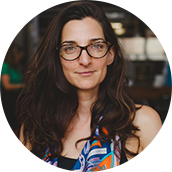 About the Author
About the Author
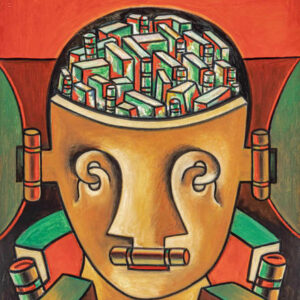 More Online Art Books
More Online Art Books
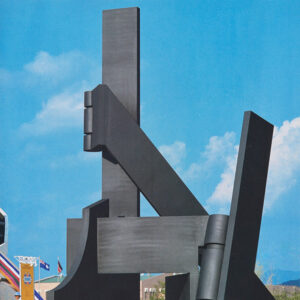 Acknowledgements
Acknowledgements